Solar Is A Big Investment
This article is to help anyone considering going solar make better decisions. Solar is a big investment so you want to make sure you get it right by having good information about location, orientation, payback, panels and inverters. We go through the facts you need to see if the advantages outweigh the disadvantages for you. If you want to know about other types of renewable energy for home, take a look at geothermal renewables. In general, going solar belongs to the category of off-grid power systems for the home.

Main Components Are Solar Panels, Inverter, Isolating Switch, Solar Meter And Net Meter
If you’ve got high electricity bills and some sunny roof space, then solar could be a great investment for you. I’m going to talk about how you can properly research solar power to decide whether it’s a good investment for you. The main components of a solar power system are the solar panels themselves, the inverter which converts from direct to alternating current, an isolating switch, a solar meter, and then a net meter for where it meets the grid.
Orientation Chart Optimizes Your Panels
The sunnier where you live the more solar power you’re gonna make for a given panel. This may seem obvious but it’s really important because not only will you make more electricity but you may also be using a lot of electricity for air conditioning loads so it’s a really good match in hot places to get the best performance out of your solar panels you need to face them towards the rotation of the Sun in the northern hemisphere that means facing south and on the southern hemisphere that means facing north as we can see in this orientation chart from the UK it doesn’t matter if you vary a few degrees off north or south as long as you’re in that general direction.
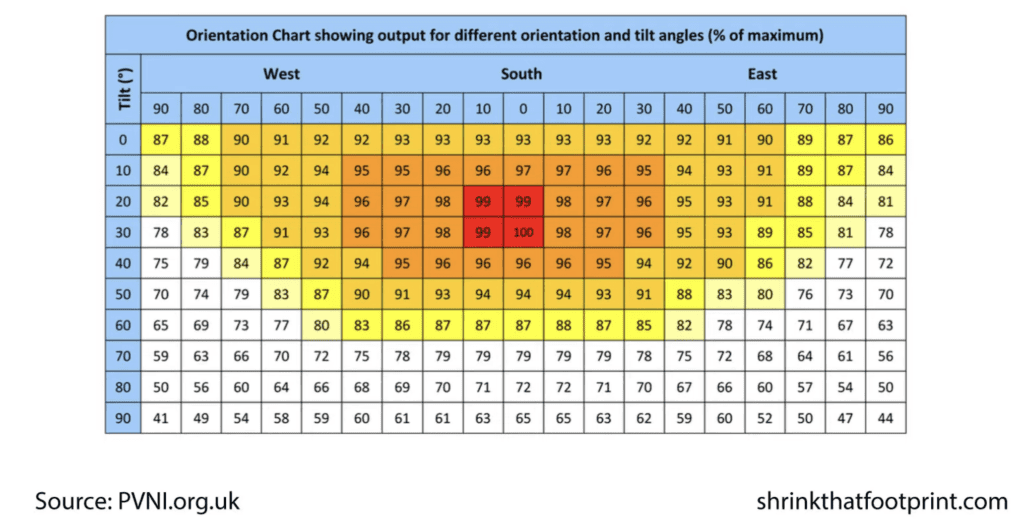
East-West Configurations Are Ok For Solar Panels
If you have to choose between a piece of roof that faces east or west, generally go for the west because it aligns well with your afternoon electricity peak. The ideal angle for a solar panel is about 85% of your latitude, which means at the equator you want it to be quite horizontal, whereas further away from the equator it gets steeper and steeper. Because of the sharp fall in solar module prices the cost of solar systems is falling dramatically in the last few years. Although you can make estimates from data you’ll find on the web, it’s not until you get a few quotes that you’ll have a rough idea of what the market holds in your area.
Sell Your Electricity Back – The Profit Depends On Local Rules
An important way your system can make money is when you sell unused electricity back into the grid at a price. There are feed-in tariffs available in some places for the total amount of solar power generated, while in others it’s just for the extra amount put back into the grid. You need to research your feed-in tariff policies locally because they can vary dramatically depending on policy, as seen in the difference between Germany and Australia.
Anyone who produces renewable energy is eligible for a feed-in tariff, but those who take advantage of it are often not commercial energy producers. They can include homeowners, business owners, farmers, and private investors. Generally, FITs have three provisions.
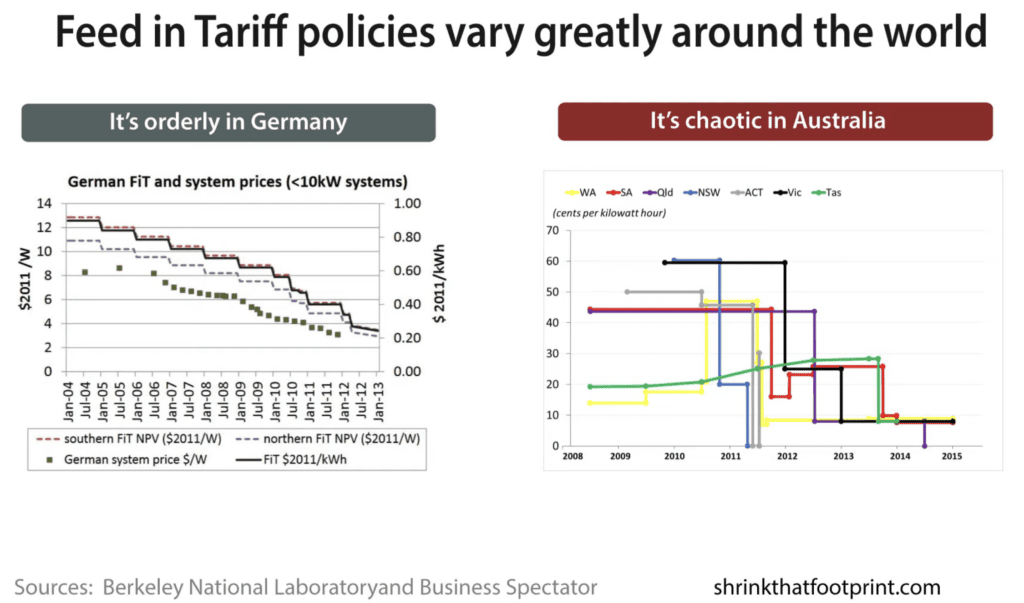
What is a FiT or Feed in Tariff? From Investopedia we learn the following:
Anyone who produces renewable energy is eligible for a feed-in tariff, but those who take advantage of it are often not commercial energy producers. They can include homeowners, business owners, farmers, and private investors. Generally, FITs have three provisions.
In some countries, there are also tax credits available to reduce the net cost of going solar. For example, in the United States you can sometimes get both a state and federal level tax credit, which can reduce the cost dramatically. The more you pay for grid electricity, the more potential benefit you’ll have from using solar to replace it.
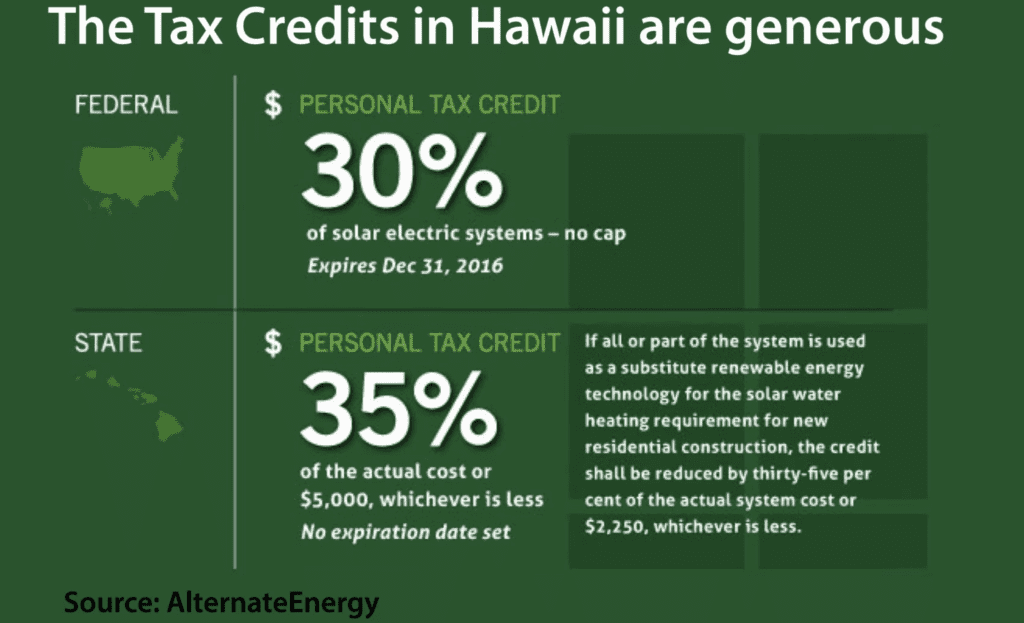
Early Solar Adopters Had High Electricity Rates
If we look at electricity prices around the world, it helps to explain why some of the early solar movers like Germany, Spain, and Italy installed so much despite not having the best solar resources. If you are at some point looking at a payback calculation, I’d really recommend you look at the assumptions of how much of the electricity you’re going to use, how much electricity prices are going to increase over time, and what your opportunity cost of capital is.
Use A Solar Calculator To Find Out When You Recover Your Money
I’m just going to give you three examples to show you why these assumptions matter so much. Using an excellent solar calculator from solarquotes.com.au, today you in Australia this first chart shows you what effect changing the assumptions about how much of the electricity generated you will use has on both the internal rate of return and the payback. In yellow, if you look from left to right, you’ll see that using only 50% of your electricity, that payback is up to 14 years, whereas if you’re using 70% of electricity, it’s down to eight years.
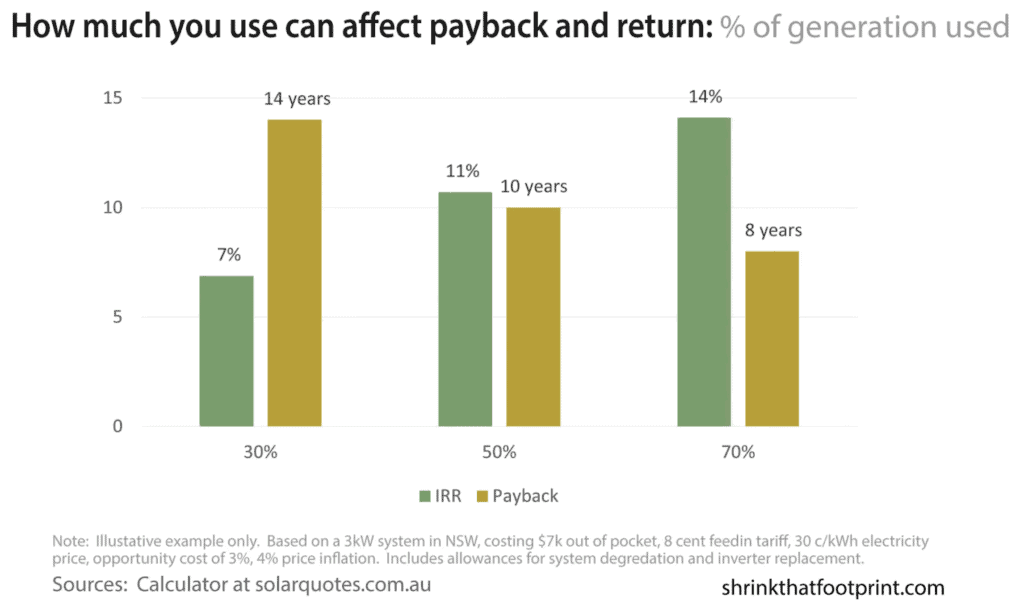
Future Increase In Electricity Prices Will Shorten Investment Recovery Time
Installing solar panels has different impacts on the payback period, depending on a few different factors. For example, if electricity prices are slowly rising at 2%, the payback period is 10 years. However, if electricity prices are rising quickly at 7%, the payback period is 8 years. Additionally, many calculations don’t account for the opportunity cost of capital, which is the money you could have made by investing in solar panels instead of something else. With an opportunity cost of 6%, the payback period is up to 12 years. However, if there is no opportunity cost of capital, the payback period is only 7 years. One thing that people often forget to think about is how getting solar panels will affect the value of their home. This is particularly important if there’s any chance you’ll sell your home in the next decade or so. Studies from the US show that solar panels can add around 3 to 4% of value to a home.
Find Independent Test Metrics To Optimize Your Purchase
There’s a massive difference between attractive solar panels and really ugly solar panels, depending on where you live. In the mix of generation technologies on your grid, going solar is going to save a dramatically different amount of carbon. If cutting carbon is your main criteria, then there are lots of more cost-effective ways of reducing emissions than solar. Your solar panels are going to be on that roof for 20, 30, or even 40 years, so you need to know they’re decent. The best way, as far as I know, to find out if you’re getting a decent solar panel is to check if there’s any third-party laboratory testing of your panel, and to see how its performed. The Californians do an excellent job of testing panels. You want to check if the performance ratio on your panel is over 90.
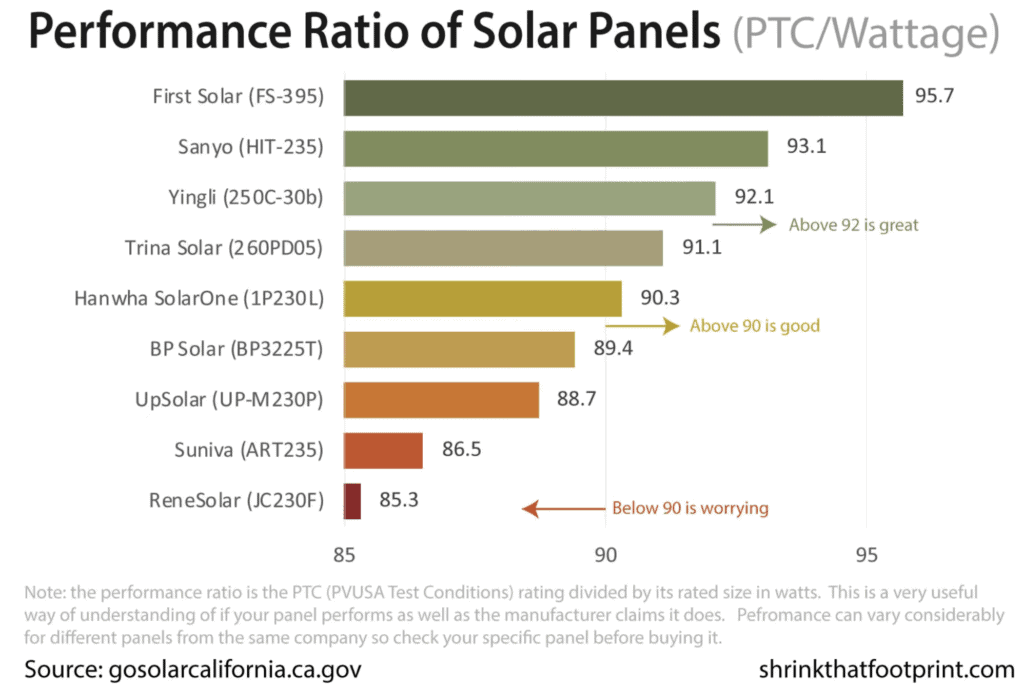
You should make sure that the solar panel you’re getting is from a reputable manufacturer, as the inverter is the most likely element to fail in your solar power system. A good inverter should have an efficiency of more than 95% (which you can check on the Californian website) and a warranty of at least 10 years.
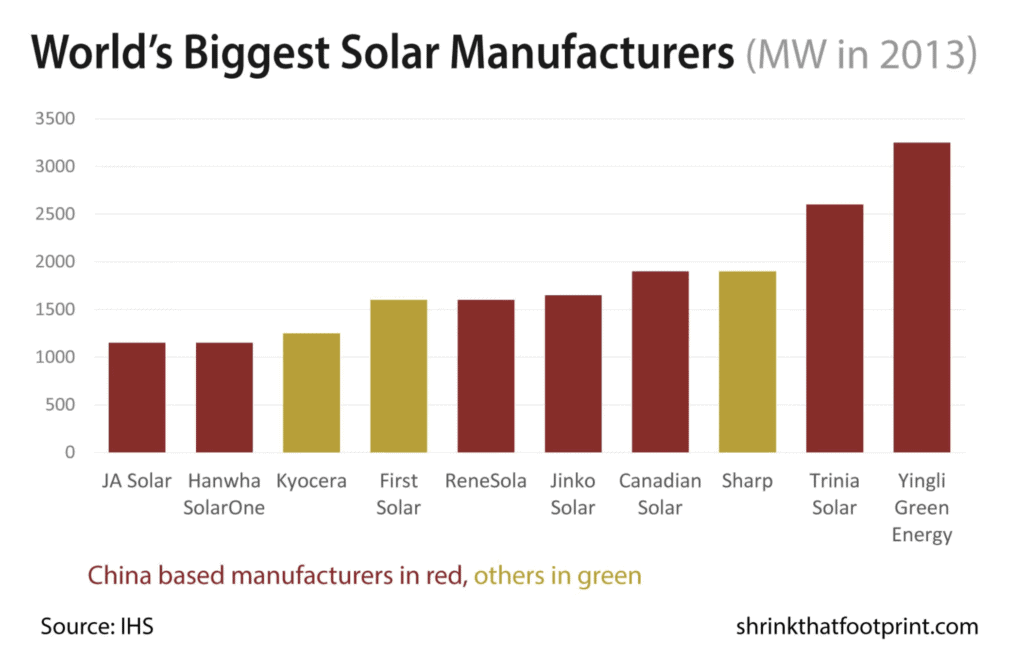
The top European brands like SMA, Power One and Xantrex make great inverters. Also, if your solar array is likely to receive any significant shading, then you should investigate whether micro inverters might be a better option for you because they’ll stop the entire string of panels dropping down to a lower wattage if only part of the roof is shaded.

If you’re up to the point of getting some solar quotes, then it’s worth jumping on the web to see if you can find any unbiased reviews of supplies in your area. Also, you should never underestimate the willingness of your neighbors to talk about their solar panels, so if you’ve got a neighbor and you talk to them and find out that they had a good experience, then you should check out who this is why it was.
Lindsay Wilson
I founded Shrink That Footprint in November 2012, after a long period of research. For many years I have calculated, studied and worked with carbon footprints, and Shrink That Footprint is that interest come to life.
I have an Economics degree from UCL, have previously worked as an energy efficiency analyst at BNEF and continue to work as a strategy consultant at Maneas. I have consulted to numerous clients in energy and finance, as well as the World Economic Forum.
When I’m not crunching carbon footprints you’ll often find me helping my two year old son tend to the tomatoes, salad and peppers growing in our upcycled greenhouse.
